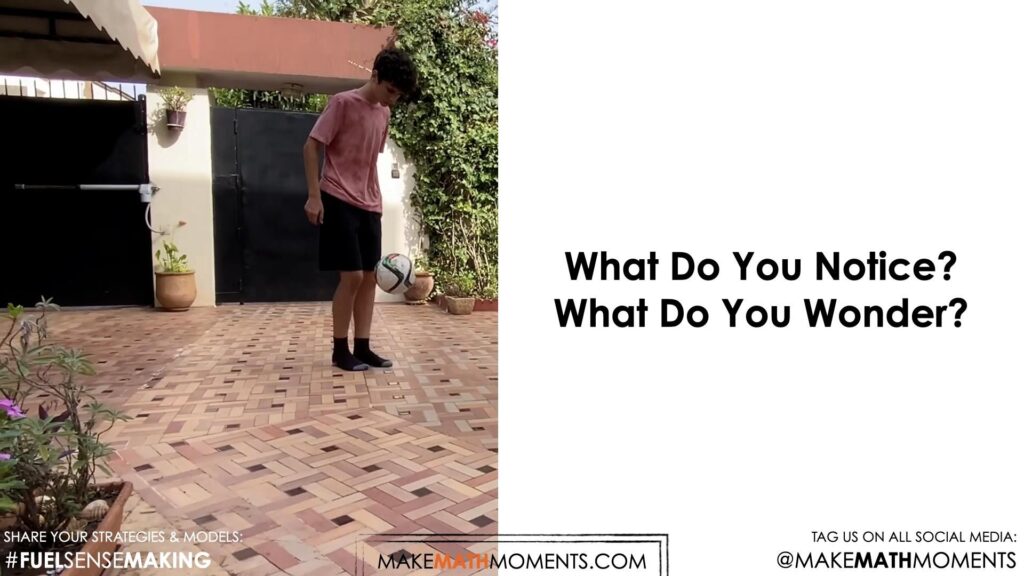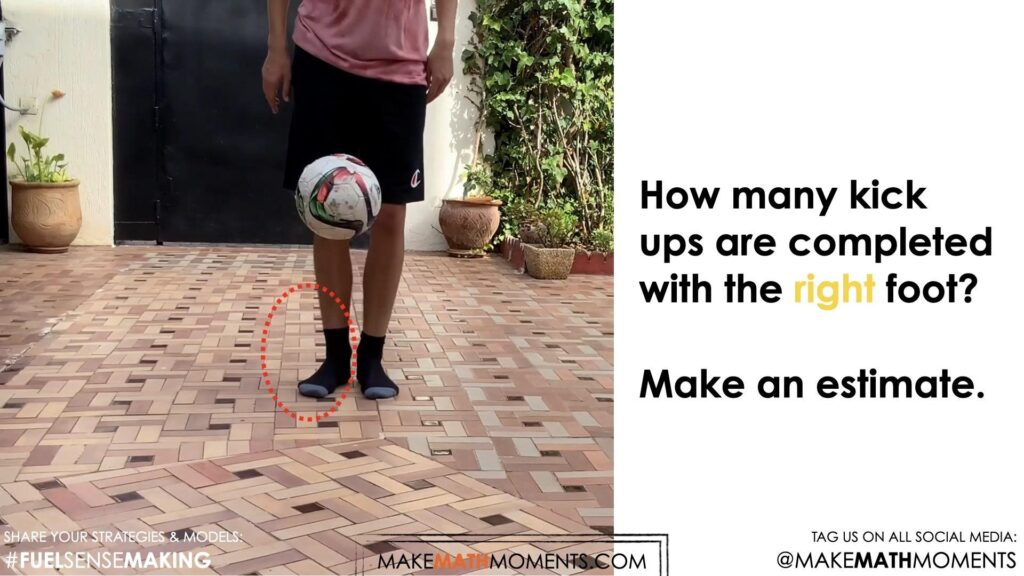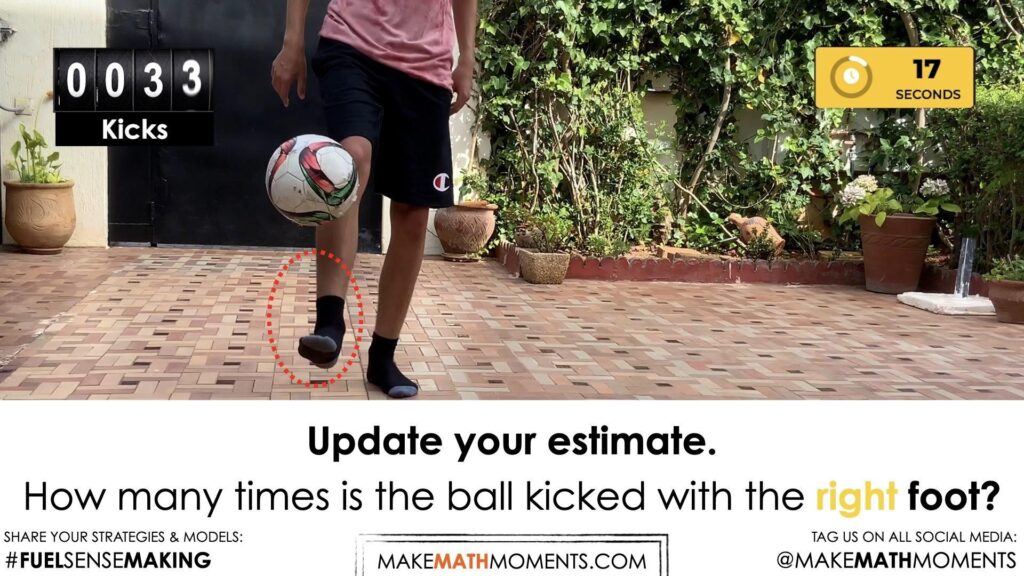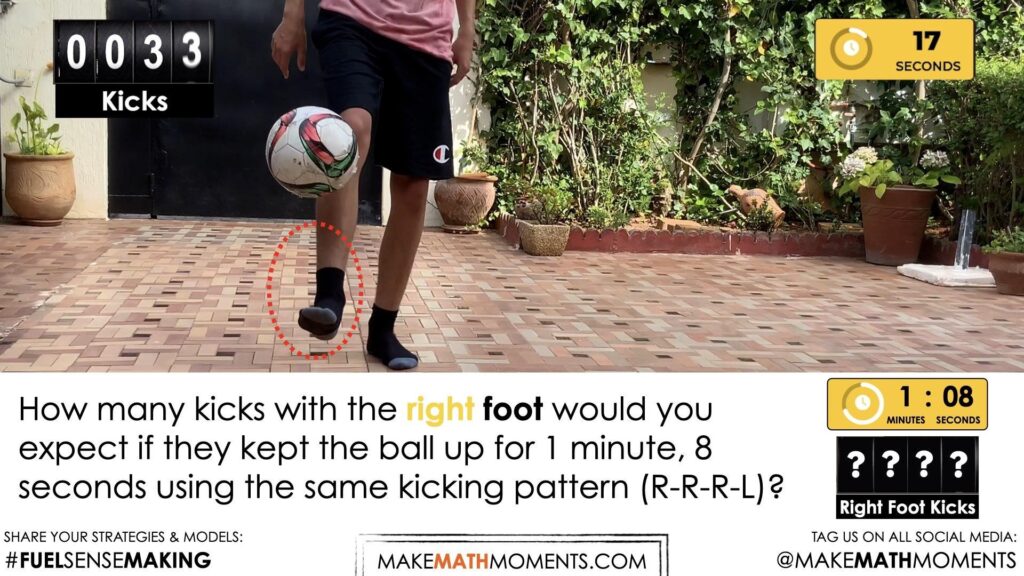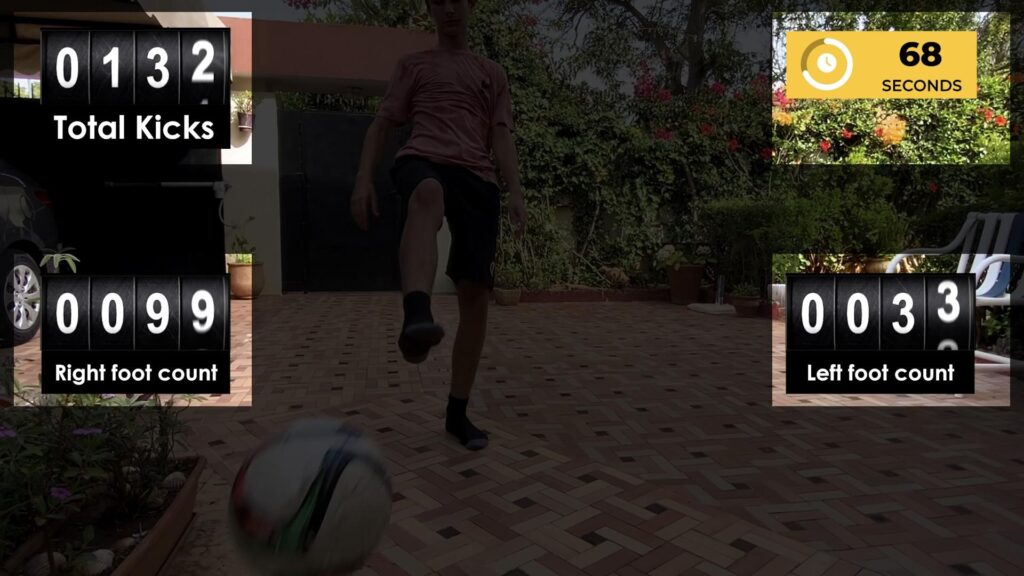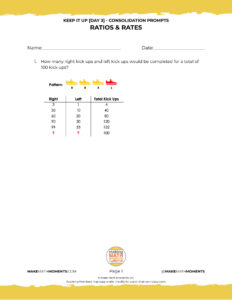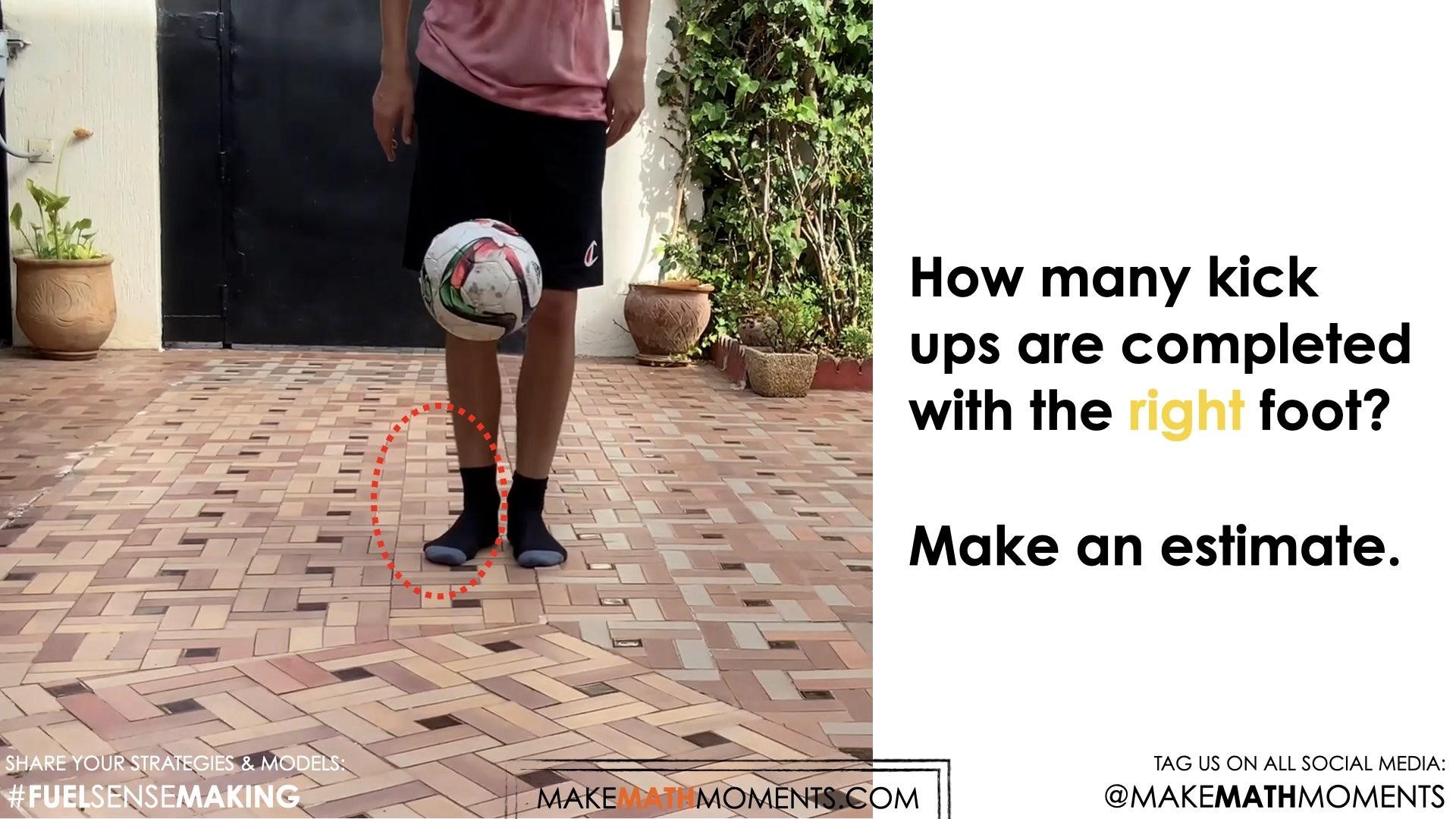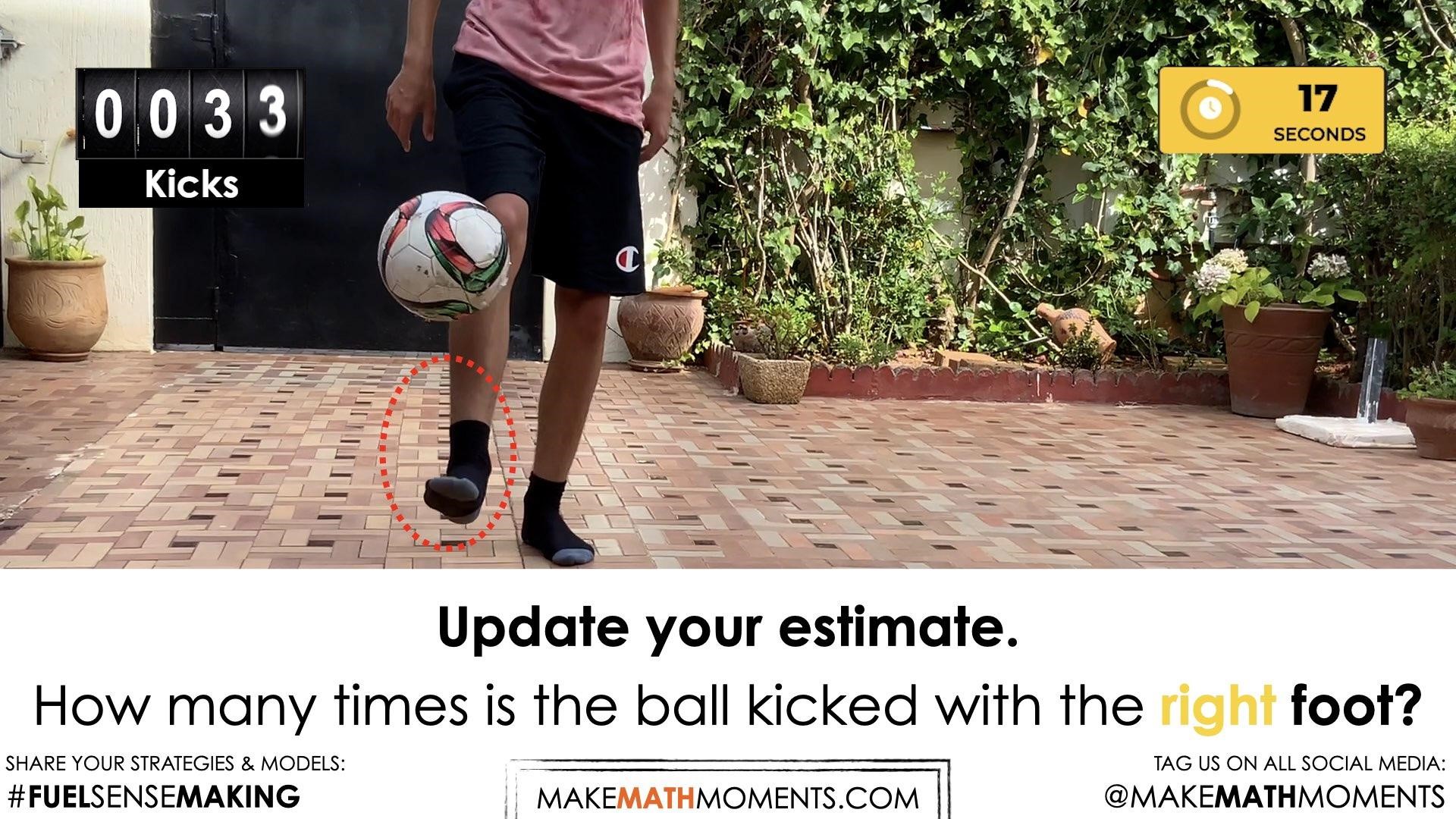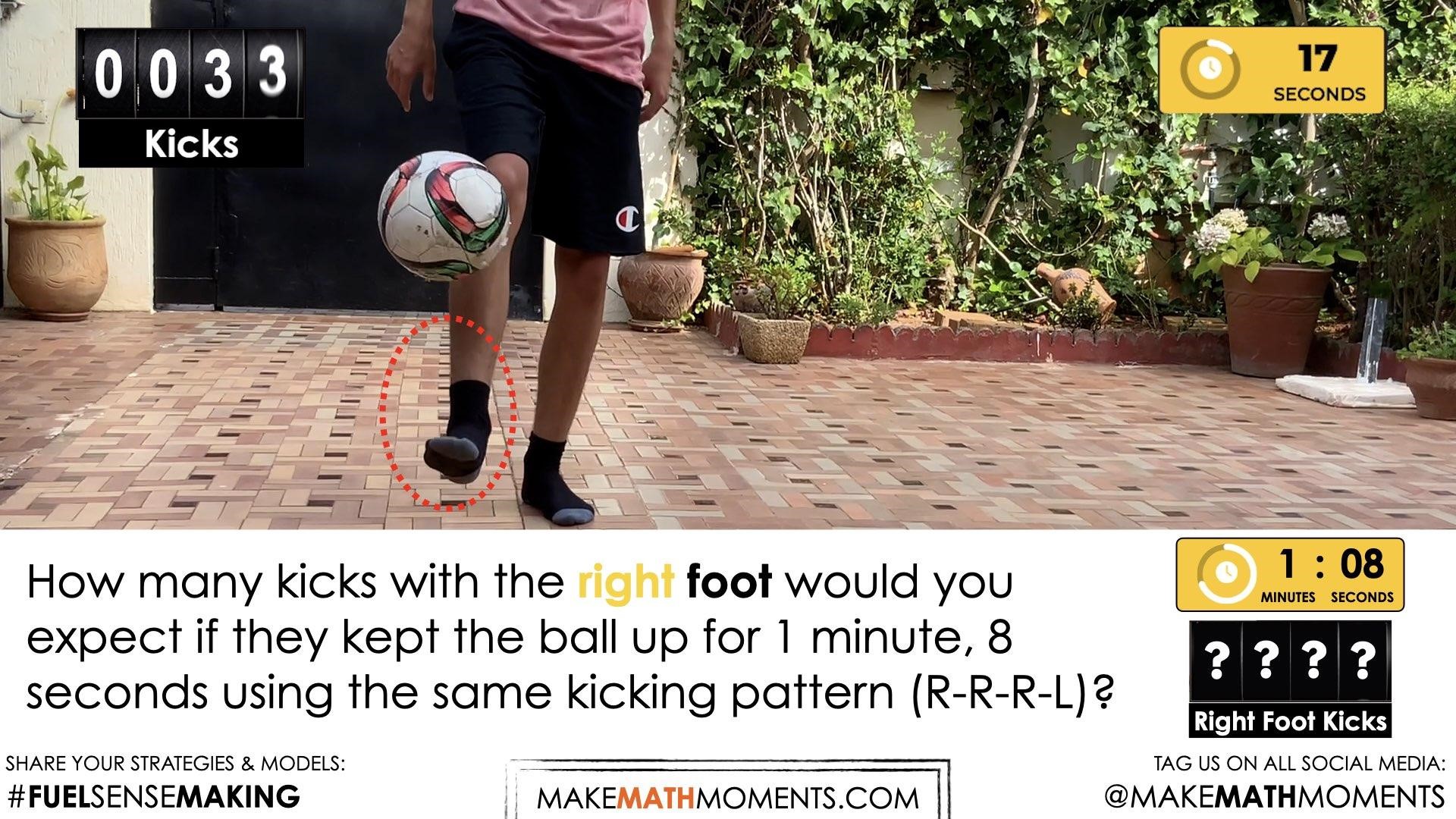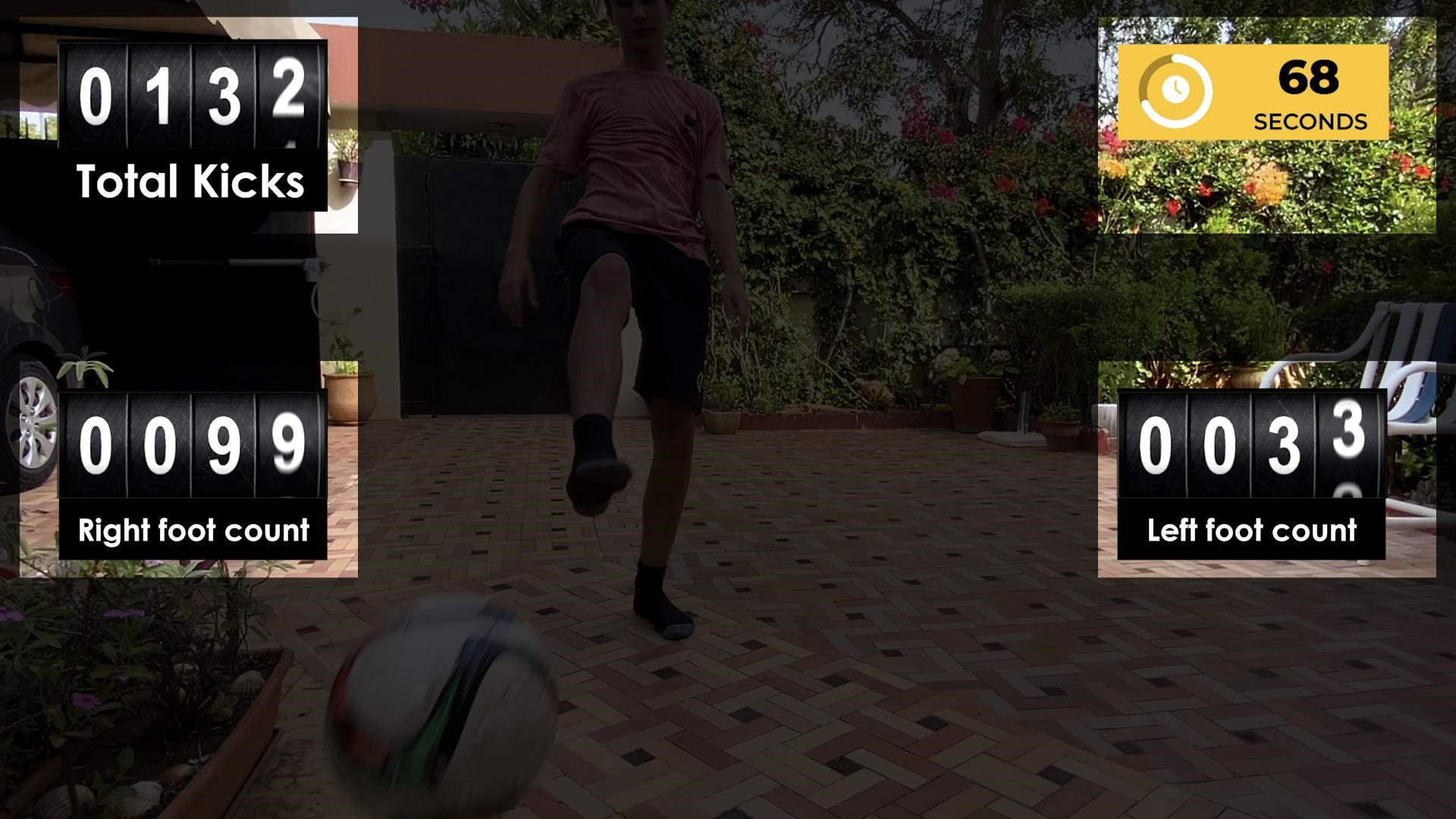Task Teacher Guide
Be sure to read the teacher guide prior to running the task. When you’re ready to run the task, use the tabs at the top of the page to navigate through the lesson.
In This Task…
In this multi-step task, students will find how many kick ups a person can do with his right foot by first determining the total number of kick ups, exploring how quantities covary and finding an equivalent ratio. They will then study a pattern and derive the number of kick ups on each foot. Extending their reasoning to consider a whole of 100, students will explore the connection between ratios, rates and percents.
Intentionality…
In this task, students explore the concept of ratios and proportions through the context of a soccer player who strives to keep up a pattern of kick ups. This task serves as a context to bring forth a number of strategies and approaches that can be used to solve problems involving composed units.
Some of the big ideas that will likely emerge in this task include:
- A ratio is a multiplicative comparison between two or more quantities;
- There are two types of ratios; a composed unit ratio and a multiplicative comparison ratio;
- A composed unit is often (not always) a ratio with two distinct units;
- Unknown quantities in a ratio relationship are often most efficiently revealed through multiplicative thinking strategies rather than additive thinking strategies;
- A composed unit ratio can be scaled in tandem;
- Ratios can be constructed by comparing a part to its whole (part-to-whole) or comparing a part to another part of the whole (part-to-part).
- Ratios can be represented using the separator “to” or a colon “:”. Two quantities from a ratio relationship can also be represented as a quotient through the use of the division symbol “÷” or with the fraction bar.
- When you divide two quantities in a composed unit ratio through partitive division, you reveal a rate.
- Equivalent ratios are derived from the same rate;
- An infinite number of equivalent ratios can be revealed to assist in determining an unknown quantity from a ratio relationship;
- Ratio problems can be represented and solved using a variety of strategies, tools, and representations; and,
- A multiplicative comparison ratio where one quantity, x, is compared to a whole of 100 can be written as a ratio (i.e.: x:100) or as a percent (i.e.: x%). Despite the rate language of “per” being used in the term “percent” (meaning per 100) as well as the common practice of using percents to describe growth or decay rates, a percent remains a ratio until the quantities are divided partitively.
What You’ll Need…
A variety of tools for students to use to think through the problems, including, but not limited to:
- Linking cubes, Omnifix cubes or tiles
- Cuisineaire rods
- Grid paper
- Whiteboards & markers
Spark
What Do You Notice? What Do You Wonder?
Show students the following video:
Then, ask students:
What do you notice?
What do you wonder?
Have students do a Think-Pair-Share routine:
- Students have individual think time to jot down ideas on paper or whiteboard (minimum 1 minute). Students may benefit from watching the video a second time or having a still image from the video to refer to.
- Students share their observations and questions with a partner.
- Students share as a whole group, either their own noticings and wonderings, or a meaningful observation or question they heard from their partner during the share (while giving credit to their partner). All contributions are acknowledged and recorded on an anchor chart on the board.
Possible points that may come up include:
- I notice there’s a person playing with a soccer ball – it’s the same kid as [Day 1]
- I wonder how many times they can kick the ball in the air without losing it
- I notice that they are trying to do a pattern
- I wonder if he’s going to keep up the pattern or change it
- I wonder if it’s harder to do kick ups with the right or left foot
- I wonder if it’s easier to do kick ups with socks or with shoes (why did the person take off their shoes?)
Students may or may not have noticed the pattern in which the person kicks the ball three times with his right foot for every one time with his left. Consider showing students the following video where a closeup will hopefully reveal the pattern:
Then, ask students:
What else do you notice?
What else do you wonder?
At this point, if students have not yet noticed the “3 right- 1 left: pattern, consider bringing it to their attention. You may also wish to point out that the very first kick up doesn’t count as it is used to get the ball in the air.
Spending time to acknowledge and address specific thoughts that students shared, whether a notice or a wonder, is crucial to building a culture in your classroom where students know that their voice is being valued and thus encourages them to continue sharing their thoughts and opinions later in this lesson and in future lessons.
Estimation: Prompt
Once student noticings and wonderings have been acknowledged and noted, the class can settle on a first question to explore:
How many kick ups are completed with the right foot?
Make an estimate.
Students begin by making an estimate before they are provided with all the information they need to answer the question, thus requiring them to consider what would be a reasonable number of kick ups.
Encouraging students to begin by considering estimates that are “too high” and “too low” will provide a range within which more likely estimates can be framed. It can also provide students who may be reluctant to share with a safe entry point. Students can then make a “reasonable estimate”, which they will have a chance to revise.
Be sure not to skip over asking students to make an estimate despite not having all the necessary information as this is a very important step in the Curiosity Path. Providing students with an opportunity to make an estimate and try to articulate their thinking with their peers provides a very low floor opportunity for them to not only better understand the context, but to also begin nudging them to think about what will be important to make their estimate more precise as we continue through the lesson.
Students should be given an opportunity to share their estimates at this point, but refrain from sharing their rationale just yet in order to give everyone a chance to develop their own thinking.
Have students turn to a partner and generate questions they could ask that would provide them with information they could use to answer the question. Ask students how they would use the information to answer the question.
Prompt:
What information would you need to answer the question?
How would you use that information?
After students share some of what they notice and wonder about the shapes that have ‘popped’ on the screen, continue playing the video until the next prompt appears:
Describe as many relationships as you can between the circles and the squares.
Estimation: Update Your Estimate
Reveal to the students the video of the first 33 kick ups which took a total of 17 seconds to complete.
At this point, students may wish to update their estimates. Provide them with time to do so before revealing the next image. A simple prompt might be:
The person in the video did a total of 33 kick ups in 17 seconds, not including the first “kick” to get the ball in the air.
Update your estimate for how many kick ups the person completed with their right foot.
Provide students with time to revise their estimates.
While Students are Revising Their Estimates
Listen and observe as students revise their estimates. Are students aware that the layered structure of a rectangular prism allows them to think additively or use multiplication?
How are students approaching the problem? What strategies and mathematical models are they leveraging? Are they:
- Basing estimates on their own experiences with soccer, juggling, or other similar activity? (It’s harder to keep up a pattern, so maybe they won’t go for very long?)
- Basing estimates on the amount of time it would take to do more kick ups? (Can they keep going for a full minute? 2 minutes? 10 minutes?)
This is an opportunity to make note of where students are developmentally. Prompt students to explain their thinking and how they plan to use their model/strategy to how many “kick ups” the person can do.
Sense Making
Crafting a Productive Struggle
Proceed to reveal the amount of time that the person continues to kick the ball by showing this image while verbalizing the storyline of this context using the prompt below.
To begin the sense making portion or the lesson, provide students with the following prompt:
We saw this person complete 33 kick ups in 17 seconds.
If they managed to keep the ball up using the same kicking pattern (R-R-R-L) for a total of 1 minute and 8 seconds before losing the ball, how many kicks with the right foot would you expect them to make?Use a mathematical model of your choice to convince your mathematical community.
Be sure to explicitly state that calculators are not to be used to determine the number of kick ups. However, do consider making the following tools available to students without explicitly directing students to use them:
- Linking cubes, Omnifix cubes or tiles
- Cuisenaire rods
- Grid paper
- Whiteboards & markers
Remind students to refrain from shouting out answers, and be sure to emphasize the importance of creating a viable argument – a model that can be used to convince others.
During Moves
While Students Are Productively Struggling…
Login/Join to access the full Math Talk, teacher guides, downloadable slide decks and printable handouts for this lesson and all problem based units.
Student Approach #1: Concrete Modeling
Login/Join to access the full Math Talk, teacher guides, downloadable slide decks and printable handouts for this lesson and all problem based units.
Student Approach #2: Ratio Table
Login/Join to access the full Math Talk, teacher guides, downloadable slide decks and printable handouts for this lesson and all problem based units.
Student Approach #3: Comparing Part-Part to Part-Whole Ratio
Login/Join to access the full Math Talk, teacher guides, downloadable slide decks and printable handouts for this lesson and all problem based units.
Next Moves
Consolidation: Making Connections
Login/Join to access the full Math Talk, teacher guides, downloadable slide decks and printable handouts for this lesson and all problem based units.
Reveal
Consider sharing the following reveal video with your students:
Alternatively, you could share the reveal image:
Reflect
Login/Join to access the full Math Talk, teacher guides, downloadable slide decks and printable handouts for this lesson and all problem based units.
Download Editable/Printable Handout
Become a member to access purposeful practice to display via your projector/TV, download the PDF to upload to your LMS and/or print for students to have a physical copy
Resources and Downloads
Lesson Tip Sheet

Download the lesson plan in PDF format so you can keep it handy and share with colleagues.
Videos & Images
 Download the videos, images, and related media files to your computer to avoid streaming.
Download the videos, images, and related media files to your computer to avoid streaming.
Keynote Slides
 Download in Apple Keynote format to avoid streaming video and run the lesson smoothly.
Download in Apple Keynote format to avoid streaming video and run the lesson smoothly.
PowerPoint Slides
 Download in Microsoft PowerPoint format to avoid streaming video and run the lesson smoothly.
Download in Microsoft PowerPoint format to avoid streaming video and run the lesson smoothly.
Printable Handout
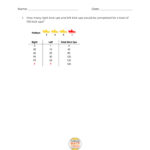
Download/Edit the handout so you can keep it handy and share with colleagues.
Explore The Entire Unit of Study
This Make Math Moments Task was designed to spark curiosity for a multi-day unit of study with built in purposeful practice, and extensions to elicit and emerge mathematical models and strategies.
Click the links at the top of this task to head to the other related lessons created for this unit of study.
Consolidation Prompt #1
Login/Join to access these Consolidation Prompts and Extensions along with full teacher guides, downloadable slide decks and printable handouts for this lesson and all problem based units.
Consolidation Prompt #2
Login/Join to access these Consolidation Prompts and Extensions along with full teacher guides, downloadable slide decks and printable handouts for this lesson and all problem based units.
Consolidation Prompt #3
Login/Join to access these Consolidation Prompts and Extensions along with full teacher guides, downloadable slide decks and printable handouts for this lesson and all problem based units.
Download Editable/Printable Handout
Become a member to access purposeful practice to display via your projector/TV, download the PDF to upload to your LMS and/or print for students to have a physical copy



